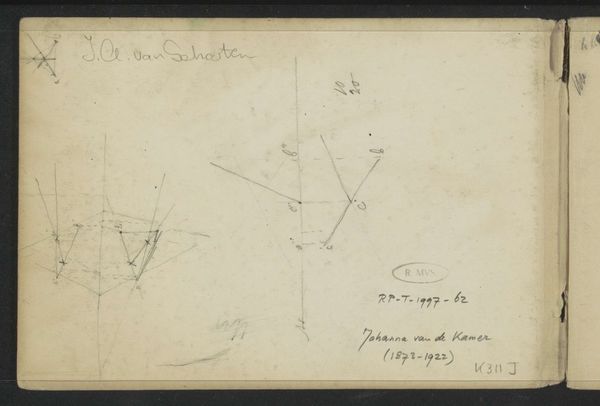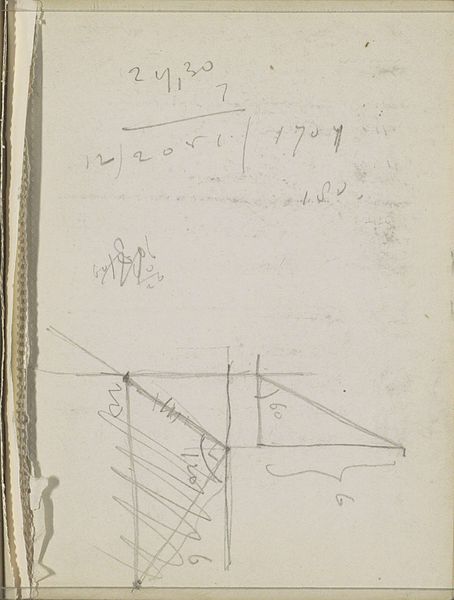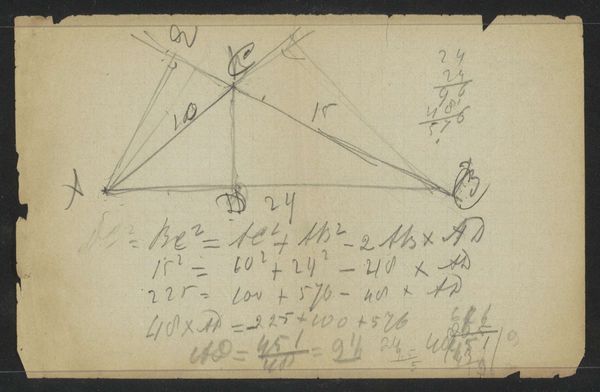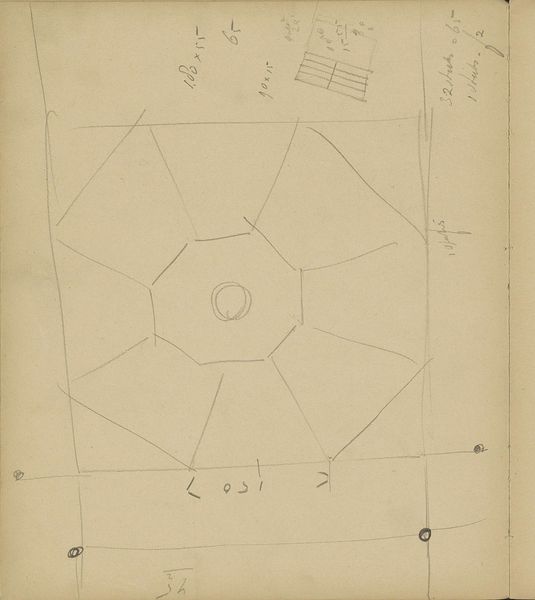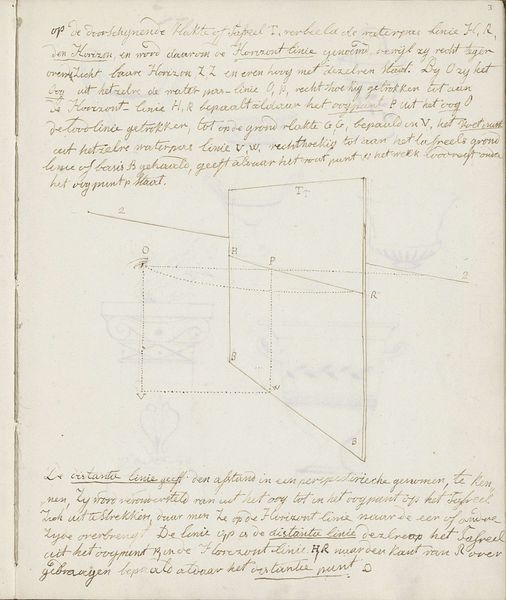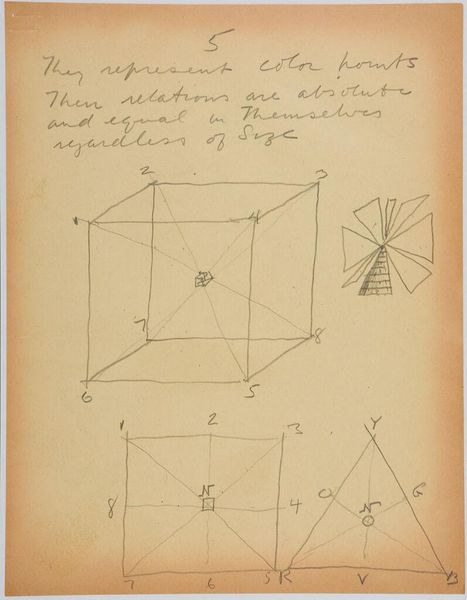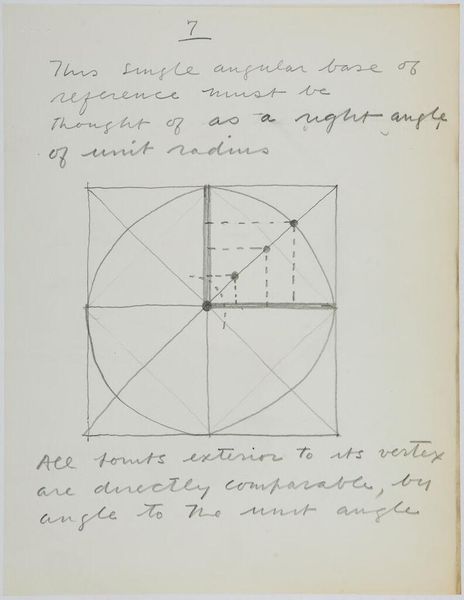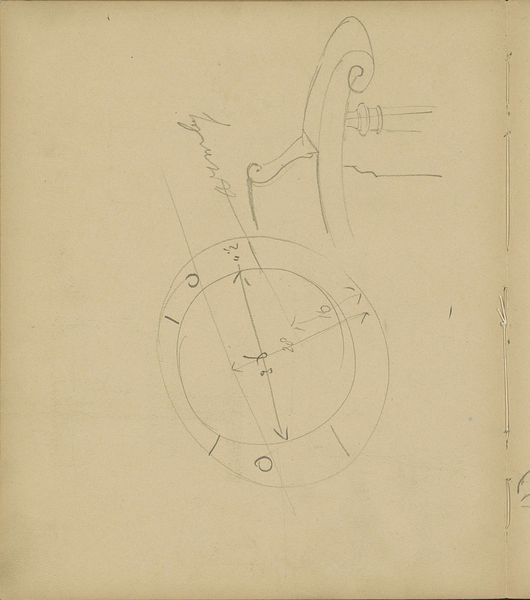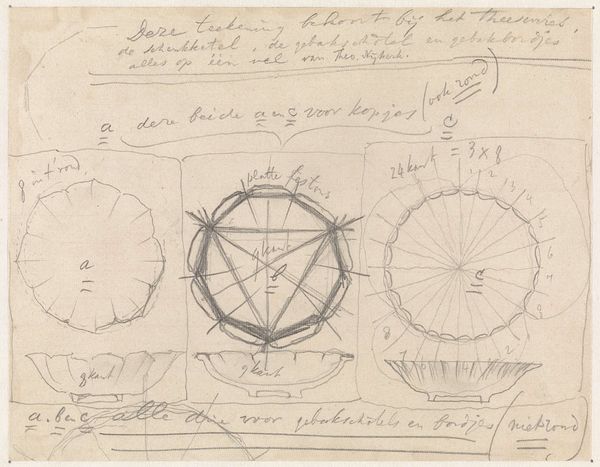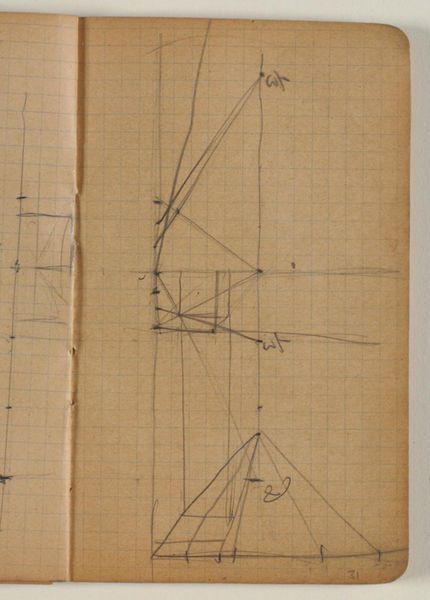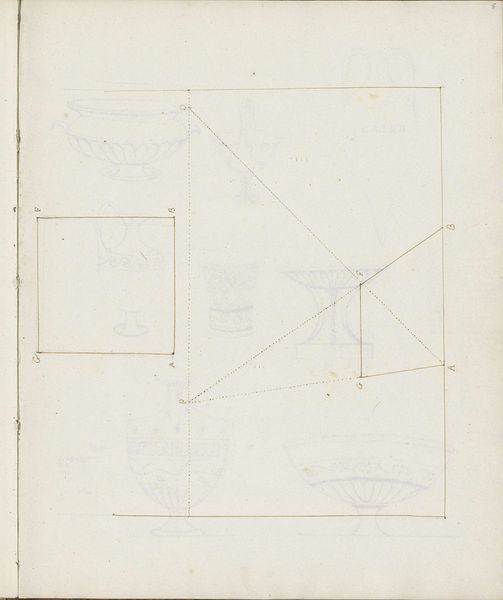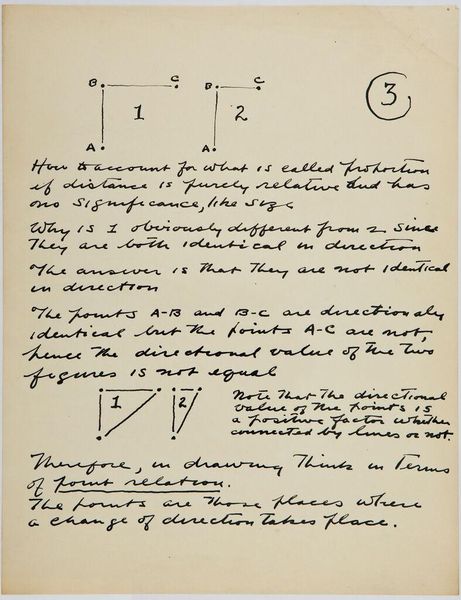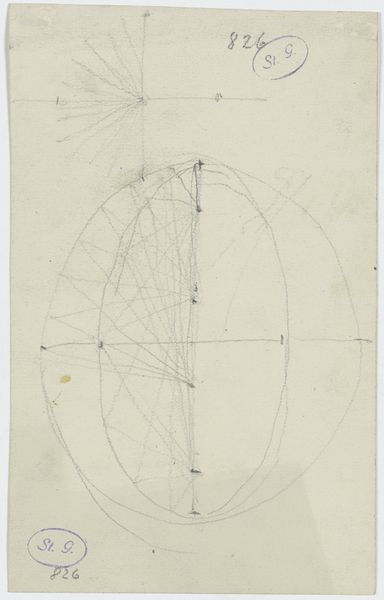
drawing, paper, pencil, graphite
#
drawing
#
aged paper
#
hand written
#
hand-lettering
#
hand drawn type
#
hand lettering
#
paper
#
personal sketchbook
#
hand-written
#
hand-drawn typeface
#
geometric
#
pencil
#
geometric-abstraction
#
graphite
#
sketchbook drawing
#
sketchbook art
Copyright: Rijks Museum: Open Domain
Julie de Graag made this study of geometric figures and lines using pencil on paper. The study hints at the growing interest in mathematics, and it reflects a period in which artists questioned traditional approaches to representation. De Graag was Dutch, and she made this work at a time when a growing network of museums and galleries were beginning to open across the Netherlands. It was a time of increasing social mobility and new opportunities for women, particularly in the arts. Theosophy was a big influence on De Graag, and it also inspired artists like Mondrian and Kandinsky who were looking for a universal visual language of form and colour. As historians, we can examine this work by looking at exhibition records, artists' letters, and social surveys. By putting it in its social and institutional context, we can more fully understand how the artist was thinking.
Comments
No comments
Be the first to comment and join the conversation on the ultimate creative platform.
